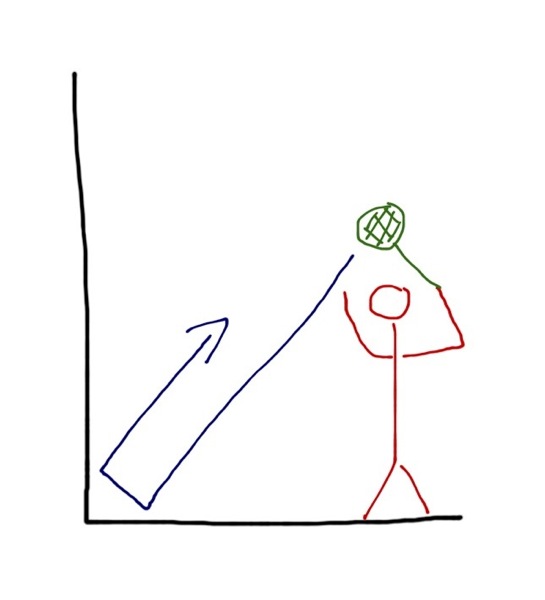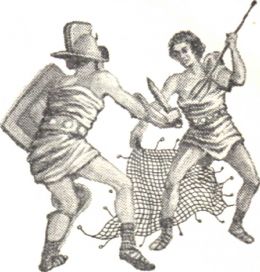Are you tired of seeing the same movie again? You prepare for weeks, honing your forehands, backhands, and serves for the big tourney, getting up early in the morning for treadmill and bicycle workouts, monitoring what you are eating (by the way, the training is the easy part of tennis, anyone can do it), and at 3-4 down a break in your first match (against an equally skilled player), it all comes tumbling down. You start to think, "Uh oh, here we go again..."
How many times have you seen this movie? And the movie ends with the same ending everytime- mean spirited temper at yourself, at your opponent, at the entire world, ending in a quick 6-4, 6-2 loss. You get off the court and you and your coach both agree you need to hit a lot more forehands because that's what broke down at the 3-3 game, thus deciding the first set.
I assure you, THAT AIN'T IT.
What's killing you is the poor thinking. Everyone is liable to get tight, make a few errors at inopportune times, but what's inexcusable is allowing the same mistakes to continue. A smart player will remember from practice or previous matches his forehand is susceptible to breaking down in these crucial situations, so intuitively, he will not ask so much of this shot. And if he does miss his share of forehands, he certainly won't let his terrible forehand affect his emotions to the point where a break of serve turns into 4 more breaks of serve.
Now, juniors, college players, and professionals are all guilty of thinking the worst and allowing a cloud of negativity to take over. Players start making eye contact with the coach/parent/boyfriend/girlfriend after each lost point (never the winning points) to say as if, "I don't know what to do! Can't you see how bad I'm playing." (If you are the victim of the DIRTY EYE, leave the court or pull them off the court, its childish). All these shenanigans get old after a few episodes...nobody likes to watch Star Wars Trilogy or Back to the Future 30x in a row! It gets old seeing the same silly movie over and over again.
Most players are unaware of how poorly they are acting and if they are aware, most will say they can't control it. I disagree and here is why. It is all a matter of motivation. They have a choice in this and here's how I know. The next time a player pulls the "poor me" or "f*%# m*" cards- tell them you will end their life with a bullet.
Of course, this is all theory, but if you really think about it -if someone had a gun on the sidelines, ready to shoot you in the leg everytime you said or did something stupid emotionally, I promise you would stop. Controlling your emotions will not guarantee a win, but it greatly increases your odds of winning. That's all you can ask for.
 Saturday, November 12, 2011 at 05:04PM
Saturday, November 12, 2011 at 05:04PM  CAtennis
CAtennis 



